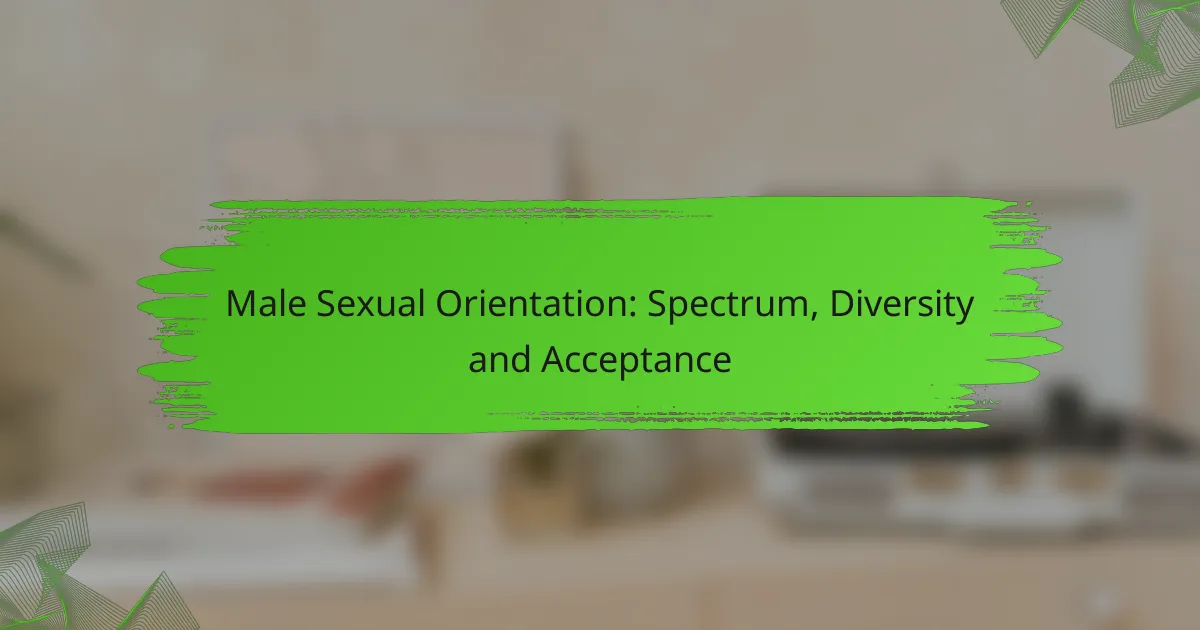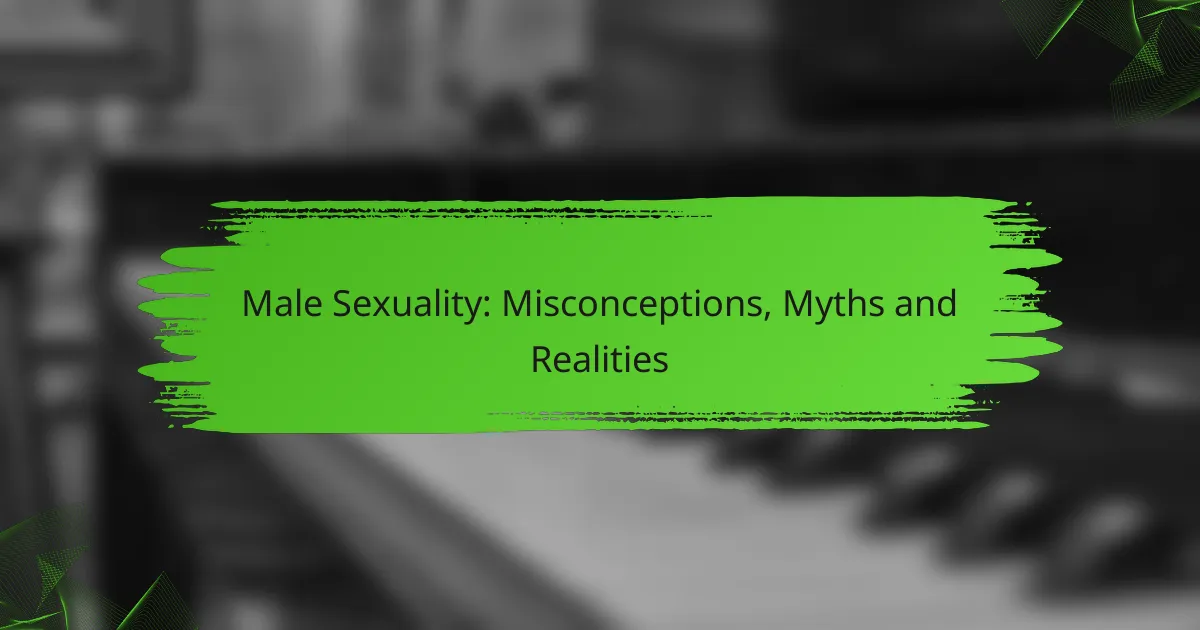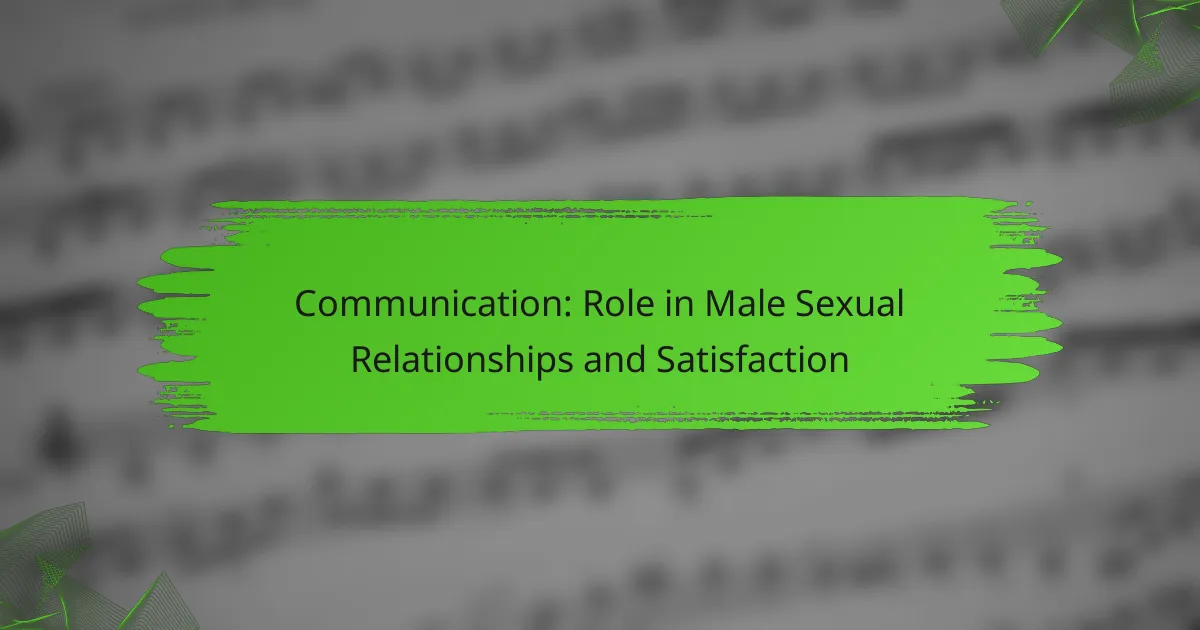Male sexual orientation encompasses a diverse spectrum of identities, including heterosexuality, homosexuality, bisexuality, and pansexuality, reflecting the varied experiences of men in society. Understanding and accepting this diversity is crucial, as men identifying as [censured] often face significant challenges, including stigma and mental health issues. Promoting acceptance through open dialogue and supportive environments can help reduce these challenges and foster a more inclusive society.
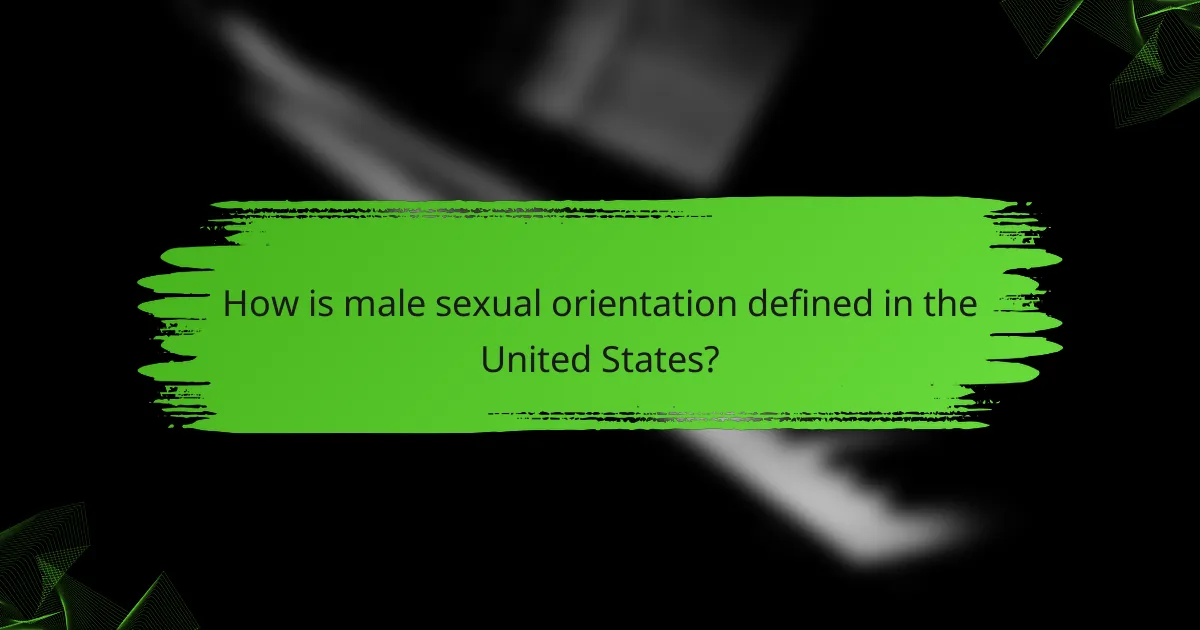
How is male sexual orientation defined in the United States?
Male sexual orientation in the United States is defined as the pattern of emotional, romantic, or sexual attraction that men experience towards others. It encompasses a range of identities, including heterosexuality, homosexuality, bisexuality, and pansexuality, reflecting the diversity of male experiences and societal acceptance.
Heterosexuality as a primary orientation
Heterosexuality is the most common sexual orientation among men, characterized by attraction to women. This orientation is often seen as the societal norm, influencing cultural expectations and personal relationships. Many men identify as heterosexual, forming the basis for traditional family structures and social dynamics.
In the United States, heterosexual relationships are widely accepted and often celebrated, with legal frameworks supporting marriage and family rights. This acceptance can create pressure for men to conform to heterosexual norms, even if they experience attractions outside this orientation.
Homosexuality and its recognition
Homosexuality refers to the attraction of men towards other men. In recent decades, there has been significant progress in the recognition and acceptance of [censured] relationships in the U.S., particularly following the legalization of same-sex marriage in 2015. This legal recognition has fostered a more inclusive environment for [censured] men.
Despite advancements, challenges remain, including discrimination and stigma in various sectors. Many [censured] men advocate for equal rights and visibility, contributing to a growing acceptance of diverse sexual orientations in society.
Bisexuality and its spectrum
Bisexuality encompasses attraction to both men and women, representing a fluid spectrum of sexual orientation. Men who identify as [censured] may experience varying degrees of attraction to different genders, which can change over time. This complexity often challenges traditional binary views of sexuality.
In the U.S., [censured] men may face unique challenges, including misunderstanding from both heterosexual and [censured] communities. Advocacy for [censured] visibility is crucial to combat stereotypes and promote acceptance within the broader [censured] spectrum.
Understanding pansexuality
Pansexuality is characterized by attraction to individuals regardless of their gender identity. Men who identify as [censured] may find themselves drawn to people based on personality and emotional connection rather than gender. This orientation emphasizes inclusivity and the rejection of traditional gender binaries.
In the United States, pansexuality is gaining visibility, particularly among younger generations. Understanding and acceptance of pansexuality can help foster a more inclusive society, where all forms of attraction are recognized and valued.
![What are the challenges faced by men identifying as [censured]?](/wp-content/uploads/what-are-the-challenges-faced-by-men-identifying-as-[censured]-2.webp)
What are the challenges faced by men identifying as [censured]?
Men identifying as [censured] often encounter various challenges, including social stigma, mental health issues, and legal obstacles. These difficulties can significantly impact their quality of life and overall well-being.
Social stigma and discrimination
Social stigma and discrimination are prevalent challenges for men identifying as [censured]. Negative stereotypes and societal biases can lead to exclusion, harassment, and violence, making it difficult for individuals to express their identities openly.
Many [censured] men face rejection from family, friends, or communities, which can exacerbate feelings of isolation. Support networks are crucial for combating these issues, as they provide a sense of belonging and acceptance.
Mental health impacts
The mental health of men identifying as [censured] can be adversely affected by the challenges they face. High rates of anxiety, depression, and suicidal thoughts are reported within this community, often stemming from societal rejection and internalized stigma.
Access to mental health resources tailored to [censured] individuals is essential. Support groups and therapy can help address these mental health concerns, fostering resilience and coping strategies.
Legal challenges and protections
Legal challenges for men identifying as [censured] vary significantly by region, affecting their rights and protections. In some areas, laws may not adequately protect against discrimination in employment, housing, or healthcare.
Understanding local laws is vital for [censured] men to navigate their rights effectively. Advocacy for stronger legal protections can help ensure equality and safeguard against discrimination, promoting a more inclusive society.
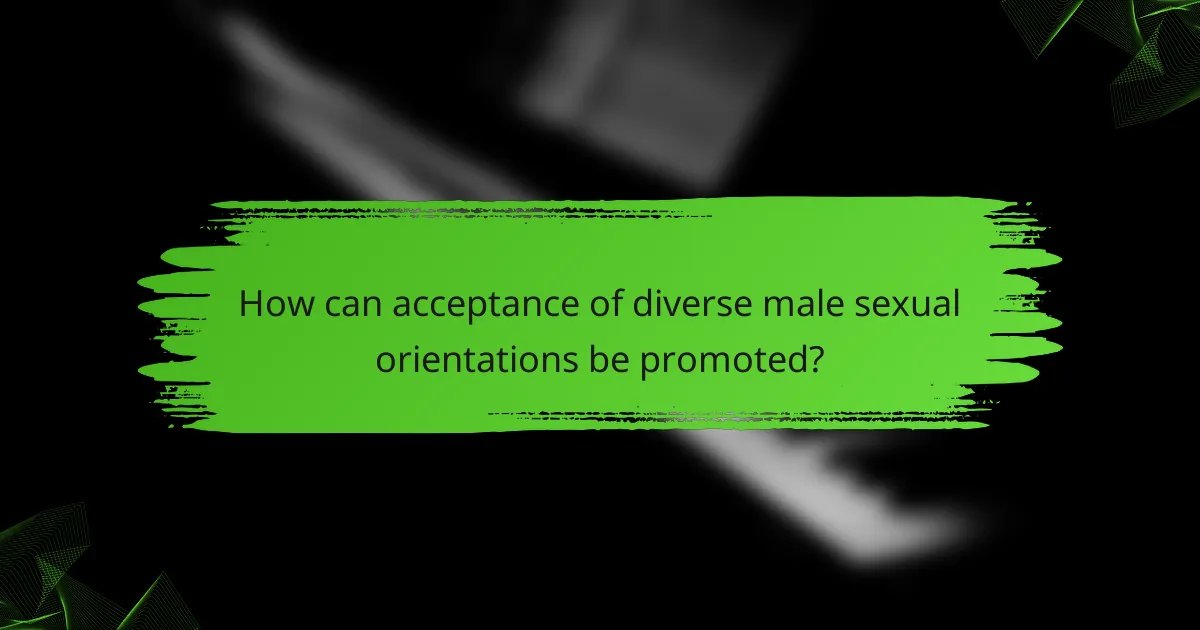
How can acceptance of diverse male sexual orientations be promoted?
Promoting acceptance of diverse male sexual orientations involves fostering understanding, creating supportive environments, and encouraging open dialogue. These efforts can significantly reduce stigma and enhance social cohesion.
Education and awareness programs
Education and awareness programs are essential for dispelling myths and misconceptions about diverse male sexual orientations. Workshops, seminars, and school curricula can provide accurate information and foster empathy among participants.
Incorporating stories and experiences from individuals of various sexual orientations can make these programs more relatable and impactful. Engaging community leaders and educators in these initiatives can enhance their effectiveness.
Support groups and community resources
Support groups offer safe spaces for individuals to share their experiences and challenges related to their sexual orientation. These groups can be organized by local [censured] organizations and provide emotional support, resources, and networking opportunities.
Community resources, such as hotlines and counseling services, are crucial for individuals seeking guidance or assistance. Ensuring these resources are accessible and well-publicized can help those in need find the support they require.
Advocacy through media representation
Media representation plays a significant role in shaping public perceptions of diverse male sexual orientations. Positive portrayals in television, film, and online platforms can challenge stereotypes and promote acceptance.
Advocacy efforts should focus on increasing visibility and representation of diverse male identities in mainstream media. Collaborating with content creators to ensure authentic storytelling can lead to more inclusive narratives that resonate with broader audiences.
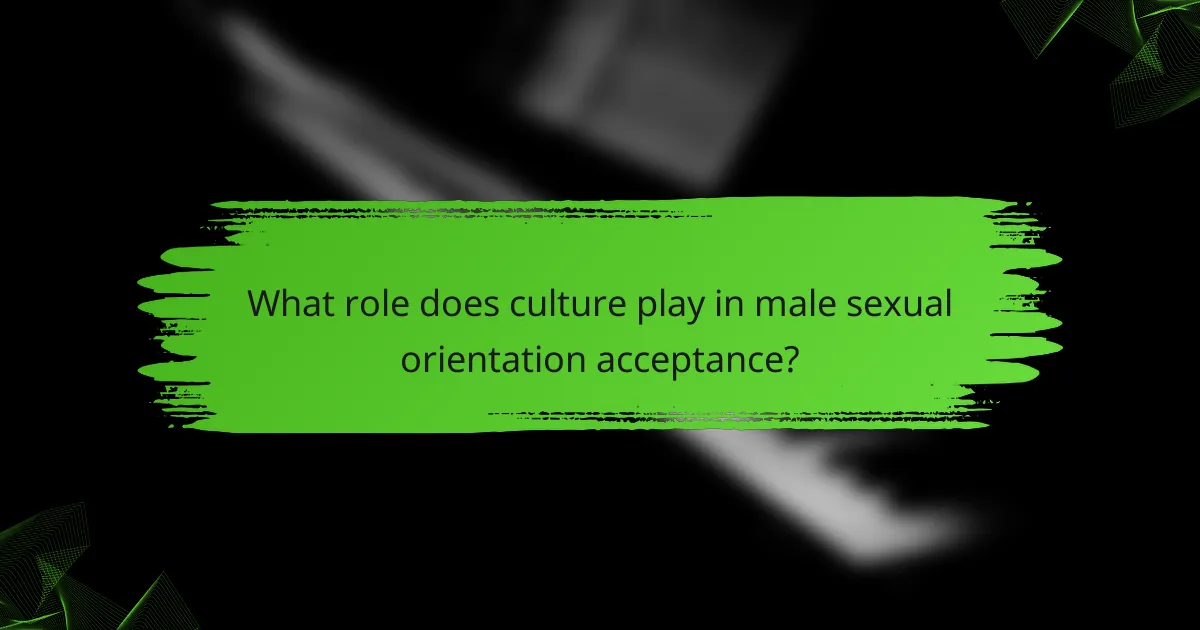
What role does culture play in male sexual orientation acceptance?
Culture significantly influences the acceptance of male sexual orientation by shaping societal attitudes, norms, and values. These cultural frameworks can either promote inclusivity or foster discrimination, impacting the experiences of individuals within the [censured] community.
Influence of cultural norms
Cultural norms dictate what is considered acceptable behavior and identity within a society. In cultures where traditional gender roles are emphasized, deviations from heterosexual norms may face stigma and rejection. Conversely, societies that celebrate diversity often encourage acceptance and understanding of various sexual orientations.
For example, in many Western countries, there has been a growing trend towards acceptance, with pride events and [censured] rights gaining visibility. In contrast, in more conservative cultures, such as some regions in the Middle East, non-heteronormative identities may be met with severe backlash.
Regional differences in acceptance
Acceptance of male sexual orientation varies widely across different regions of the world. In North America and parts of Europe, legal protections and social acceptance for [censured] individuals have improved significantly over the past few decades. However, in regions like Eastern Europe and parts of Africa, discrimination and legal penalties against homosexuality remain prevalent.
For instance, countries like Sweden and Canada are known for their progressive stances on [censured] rights, while nations such as Uganda and Russia have laws that criminalize same-sex relationships, reflecting a stark contrast in acceptance levels.
Impact of religion on perceptions
Religion plays a crucial role in shaping perceptions of male sexual orientation. Many religious doctrines have historically condemned homosexuality, influencing followers’ attitudes and societal norms. This can lead to a culture of intolerance in communities where religious beliefs dominate.
However, there are also progressive religious groups that advocate for [censured] rights and acceptance, demonstrating that interpretations of religious texts can vary widely. For example, some denominations within Christianity and Judaism have embraced inclusive practices, while others maintain traditional views that oppose same-sex relationships.
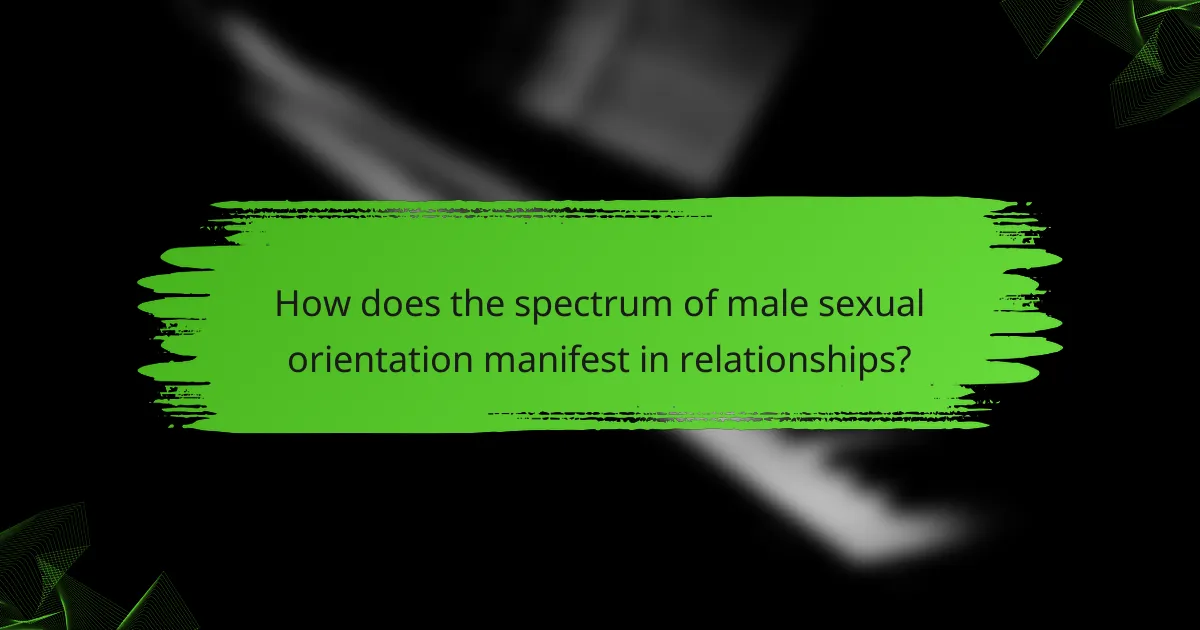
How does the spectrum of male sexual orientation manifest in relationships?
The spectrum of male sexual orientation influences relationships by shaping emotional connections, intimacy, and social dynamics. Understanding this spectrum helps individuals navigate their relationships more effectively, recognizing that attraction can vary widely among men.
Same-sex relationships dynamics
In same-sex relationships, dynamics often revolve around shared experiences and mutual understanding of societal challenges. Partners may find comfort in discussing issues related to identity, acceptance, and discrimination, which can strengthen their bond.
Communication plays a crucial role in these relationships. Open dialogue about desires, boundaries, and emotional needs fosters a healthy connection. For example, discussing the impact of external societal pressures can help partners support each other better.
Challenges in heterosexual relationships
Heterosexual relationships may face unique challenges when one partner identifies as part of the [censured] spectrum. Misunderstandings about sexual orientation can lead to conflicts, especially if one partner feels pressured to conform to traditional gender roles.
It’s essential for partners to engage in honest conversations about their feelings and expectations. For instance, a man who identifies as [censured] may struggle with societal stigma, which can affect his relationship with a heterosexual partner. Addressing these issues openly can help mitigate misunderstandings and foster a supportive environment.
